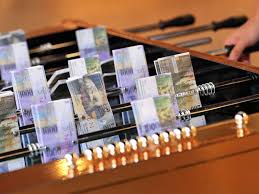By David Owen
June 24 – English Premier League clubs have racked up net profits on player sales of well over £1 billion during the last five seasons for which full figures are available. The figure suggests that club balance-sheets massively undervalue these assets – who also happen, in many cases, to be global stars.
It also indicates just how significant a help transfer receipts may be in ensuring Premier League clubs achieve break-even for the purposes of UEFA’s new Financial Fair Play (FFP) regulations.
Profit on disposal of player registrations is specifically included in relevant income for the purposes of calculating clubs’ break-even result under FFP.
Based on data contained in consecutive editions of Deloitte’s Annual Review of Football Finance, the aggregate amount of net profit booked by Premier League clubs on the sale of player registrations reached £1.144 billion between 2008 and 2012.
The biggest individual amount recorded for a single year remains £80.7 million logged by Manchester United in 2009, the year Cristiano Ronaldo was sold to Real Madrid for £80 million.
This is followed by £65.5 million for Arsenal in 2012 and £56.5 million for Tottenham Hotspur in 2009.
Net profits from this source have soared in recent years: in 2004, the aggregate net profit made by Premier League clubs from player sales was just £28.6 million, with seven clubs recording a loss.
In 2012, only two clubs – Liverpool and Sunderland – failed to make a profit on the sale of player registrations.
Accounting rules make it possible for clubs to record a net profit even when players are sold for substantially less than they cost.
This is because transfer fees are normally amortised over the length of a player’s contract.
This means that if Player X, bought for £20 million and given a four-year contract, is sold for £10 million after three years, the club would record a net profit of £5 million.
This is because £15 million of the original £20 million fee would have been amortised by the time of the subsequent sale.
Contact the writer of this story at moc.l1745340883labto1745340883ofdlr1745340883owedi1745340883sni@n1745340883ewo.d1745340883ivad1745340883

